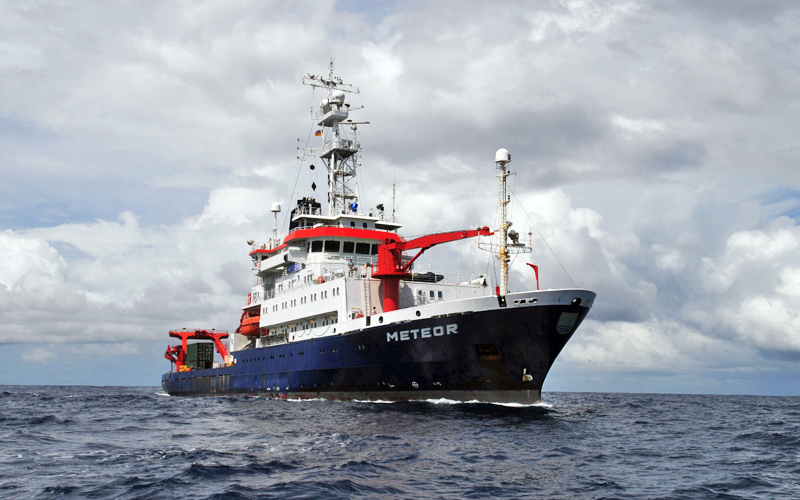METEOR M207
- Area:
- Tropical Atlantic
- Time:
-
04.01.2025 - 11.02.2025
- Institution:
- GEOMAR
- Chief scientist:
- Rebecca Hummels
The research program of cruise M207 consists of observations in the field of physical oceanography and marine meteorology in the framework of the EU Horizon2020 project NextGEMS and GEOMAR's Program Oriented Research (POF).
As part of GEOMAR's POF objectives, the cruise aims to investigate the variability of the western boundary current circulation off South America and to contribute to the assessment of the variability of the Atlantic Meridional Overturning Circulation (AMOC) at 11°S. Off the coast of Brazil, the main focus is on the investigation of transport fluctuations of the North Brazilian Undercurrent (NBUC) - as part of the AMOC and the Subtropical Cells (STCs) - on intraseasonal to decadal time scales. The sampling of a meridional section along 35°W and the mooring at 23°W on the equator provide additional information with regard to water mass changes and signal propagation across and along the equator. The meteorological program deals with the dynamics of dust outbreaks (aerosols), the climate in the eastern tropical Atlantic and with the dynamics in the main precipitation region of the intertropical convergence zone (ITCZ). The latter investigations also contribute to the EU NextGEMS project as a seasonal addition to the BOWTIE research cruise, which took place in August 2024. The detection of aerosols and the meteorological conditions during dust outbreaks is the first experiment with the new portable meteorological observatory for desert-dust transport (EXPORT) with focus on the trans-Atlantic transport and the deposition of dust.
The M207 team is made up of oceanographers and meteorologists from Kiel, Hamburg, Leipzig, Bremerhaven in Germany, from Recife in Brazil and from Miami in the US and is made up of an equal number of men and women. So far, the planned route is shown here, but the M207 team will be working on displaying some of the currently recorded research data in real time.
Follow us also on Instagram!
Figure 1: Left: Cruisetrack with conducted stations (white circles) along the most recent section. Right: Across-section velocities over the full depth range from a combination of the vessel mounted ADCP (Acoustic Doppler Current Profiler) and a lowered ADCP used on the CTD stations. Graphic: Philip Tuchen.

Figure 2: Already completed section at 5°S, explanations as in Fig. 1.Graphic: Philip Tuchen.

Figure 3: Already completed section at 11°S, explanations as in Fig. 1.Graphic: Philip Tuchen.




